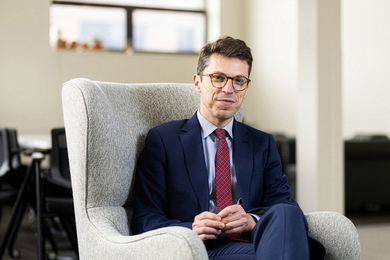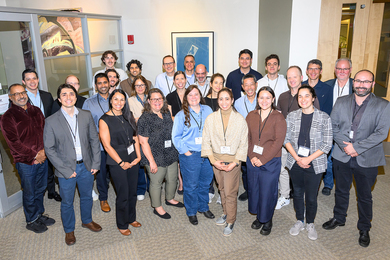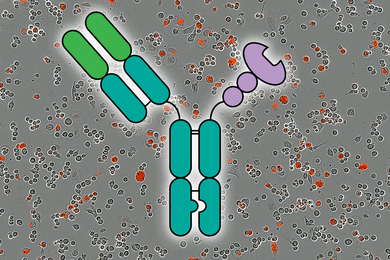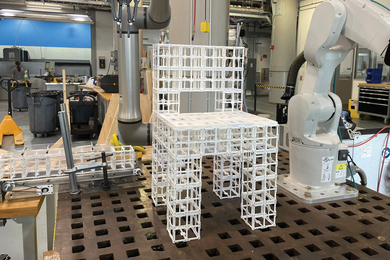Last Friday was a sort of Commencement Day for four people who already hold MIT degrees. That day, NASA announced the selection of four Institute graduates as part of the astronaut candidate class of 1998.
Gregory E. Chamitoff (PhD in aeronautics and astronautics, 1992) is a space shuttle flight controller with the United Space Alliance and lives in Houston. Timothy J. Creamer (SM in physics, 1992) is a major in the US Army and serves as a Space Operations Officer with the Army Space Command in Houston. Nicholas J.M. Patrick (mechanical engineering SM '90 and PhD '96) is senior systems and human factors engineer with Boeing Commercial Airplane Group in Seattle. Neil W. Woodward III (SB in physics, 1984) is a lieutenant in the US Navy and serves as project officer with the Naval Strike Aircraft Test Squadron at Patuxent River, MD.
Professor Thomas B. Sheridan has had an impressive track record in training future astronauts. "I am especially proud because Nick Patrick is the third of my graduate students in two years to become an astronaut," he said. Two of Professor Sheridan's students, Michael J. Massimino (SM and ScD in mechanical engineering) and Daniel M. Tani (SB and SM in mechanical engineering) were chosen by NASA as part of the 1996 astronaut class. A third MIT graduate, Heidemarie M. Stefanyshyn-Piper (SB and SM in mechanical engineering), was also chosen for the 1996 class.
The astronaut candidate class of 1998 is scheduled to begin a year of training and evaluation at the Johnson Space Center in mid-August. They will then receive technical assignments within the Astronaut Office and are likely to receive a space flight assignment in three to four years.
MIT has produced more NASA astronauts than any other private educational institution. Including the 1996 and 1998 astronaut classes, NASA has selected a total of 29 MIT graduates as astronauts. The closest private educational institutions to MIT are Purdue University with 19 and Stanford University with 18. Only the US Air Force Academy, the US Naval Academy and the US Naval Postgraduate School have had more graduates selected for the NASA astronaut program.
Eight of the active NASA astronauts hold degrees from MIT, and four of them are women: Janice Voss (SM in electrical engineering and PhD in aeronautics and astronautics), Wendy Lawrence (SM in ocean engineering), Catherine Coleman (SB in chemistry) and Pamela Melroy (SM in geology).
Beginning with David R. Scott (SM and EAA in aeronautics and astronautics, 1962) on Gemini 8 in 1966, 22 MIT graduates (19 as NASA astronauts and three as payload specialists) have made a total of 49 successful space flights, culminating in the STS-91 mission currently in space.
Four of the 12 men who walked on the moon during the Apollo program were MIT alumni. They are Apollo 11 astronaut Buzz Aldrin (ScD in aeronautics and astronautics, 1963), Apollo 16 astronaut Charles M. Duke, Jr. (SM in aero/astro, 1964), Apollo 14 astronaut Edgar D. Mitchell (ScD in aero/astro, 1964) and Apollo 15 astronaut David R. Scott.
With the completion of STS-91, MIT alumni/ae will have logged a total of more than 10,650 hours in space.
John Tylko, SB '79 in aeronautics and astronautics, is a special correspondent for MIT Tech Talk.
A version of this article appeared in MIT Tech Talk on June 10, 1998.





